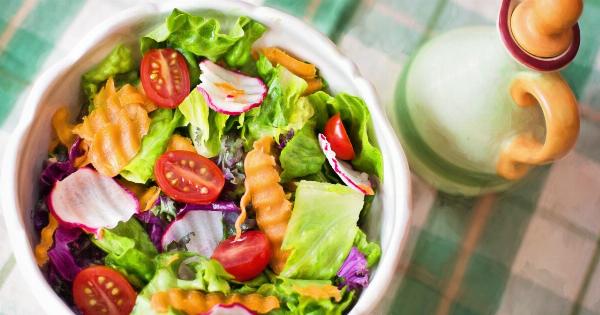Polyphenols are a class of antioxidants found abundantly in plant-based foods. These natural compounds have been extensively studied for their potential health benefits.
Research has shown that polyphenols can have a protective effect against various chronic diseases, including cardiovascular disease, cancer, and neurodegenerative disorders. Incorporating foods rich in polyphenols into your diet can significantly contribute to maintaining optimal health. This comprehensive table presents a variety of foods that are known to be high in polyphenols.
Fruits
Fruits are a wonderful source of polyphenols. Here are some of the fruits that are particularly rich in these beneficial compounds:.
1. Apples: Apples are packed with a flavonoid called quercetin, which has powerful anti-inflammatory and antioxidant properties.
2. Berries: Blueberries, strawberries, raspberries, and blackberries are all rich in polyphenols, particularly anthocyanins, which have been linked to improved brain health and a reduced risk of heart disease.
3. Grapes: Grapes contain resveratrol, a polyphenol that has been associated with a decreased risk of heart disease and improved blood sugar control.
4. Citrus Fruits: Oranges, lemons, and grapefruits contain various types of polyphenols, such as hesperidin and naringin, which have antioxidant and anti-inflammatory properties.
5. Pomegranates: Pomegranates are rich in punicalagins, a type of polyphenol with potent antioxidant effects that are beneficial for heart health.
Vegetables
Vegetables are another excellent source of polyphenols. Here are some examples of polyphenol-rich vegetables:.
1. Spinach: Spinach contains high amounts of polyphenols, including catechins, which have been linked to a reduced risk of heart disease and certain cancers.
2. Kale: Kale is packed with flavonoids, such as quercetin and kaempferol, which can help protect against chronic diseases and reduce inflammation.
3. Broccoli: Broccoli contains various polyphenols, including glucosinolates, which have been shown to have anti-cancer properties.
4. Bell Peppers: Bell peppers are rich in a polyphenol called quercetin, which has been associated with improved heart health and reduced inflammation.
5. Tomatoes: Tomatoes contain a polyphenol called lycopene, which has potent antioxidant properties and is linked to a reduced risk of certain cancers.
Nuts and Seeds
Nuts and seeds are not only a great source of healthy fats but also provide a good amount of polyphenols. Here are some examples:.
1. Almonds: Almonds contain high levels of polyphenols, particularly flavonoids, which can help reduce inflammation and oxidative stress in the body.
2. Walnuts: Walnuts are known for their high content of polyphenols, including ellagitannins, which have been associated with improved heart health.
3. Flaxseeds: Flaxseeds are rich in a type of polyphenol called lignans, which have hormone-balancing effects and may reduce the risk of certain cancers.
4. Chia Seeds: Chia seeds are packed with polyphenols, especially flavonoids, which have been linked to a reduced risk of chronic diseases, such as heart disease and diabetes.
5. Pistachios: Pistachios contain various polyphenols, including anthocyanins and proanthocyanins, which have antioxidant and anti-inflammatory properties.
Beverages
Some beverages are also a good source of polyphenols. Here are a few examples:.
1. Green Tea: Green tea contains a type of polyphenol called catechins, which have been associated with a reduced risk of heart disease and improved brain function.
2. Coffee: Coffee is a rich source of polyphenols, particularly chlorogenic acids, which have antioxidant and anti-inflammatory properties.
3. Red Wine: Red wine contains resveratrol, a polyphenol that has been linked to various health benefits, including improved heart health and longevity.
4. Cocoa: Cocoa is rich in flavonoids, particularly catechins and procyanidins, which have antioxidant effects and may enhance cardiovascular health.
5. Cranberry Juice: Cranberry juice is loaded with polyphenols, such as proanthocyanidins, which can help prevent urinary tract infections and support overall health.
Herbs and Spices
Herbs and spices not only add flavor to your meals but also contribute significantly to your polyphenol intake. Here are a few examples:.
1. Turmeric: Turmeric contains a polyphenol called curcumin, which has potent anti-inflammatory and antioxidant effects.
2. Cinnamon: Cinnamon is rich in a polyphenol called cinnamaldehyde, which has been shown to have anti-inflammatory and antimicrobial properties.
3. Garlic: Garlic contains various polyphenols, including flavonoids and organosulfur compounds, which can provide numerous health benefits, such as improved heart health and immune support.
4. Oregano: Oregano is packed with polyphenols, such as rosmarinic acid, which has been associated with anti-inflammatory and antimicrobial effects.
5. Ginger: Ginger contains gingerol, a polyphenol with powerful anti-inflammatory and antioxidant properties, which may help reduce muscle pain and support digestive health.
Conclusion
Polyphenols play a vital role in maintaining optimal health due to their powerful antioxidant and anti-inflammatory properties.
By incorporating a variety of polyphenol-rich foods into your diet, you can support your overall well-being and potentially reduce the risk of chronic diseases. Remember to eat a diverse range of fruits, vegetables, nuts, seeds, and spices to maximize your polyphenol intake and promote a healthy lifestyle.































